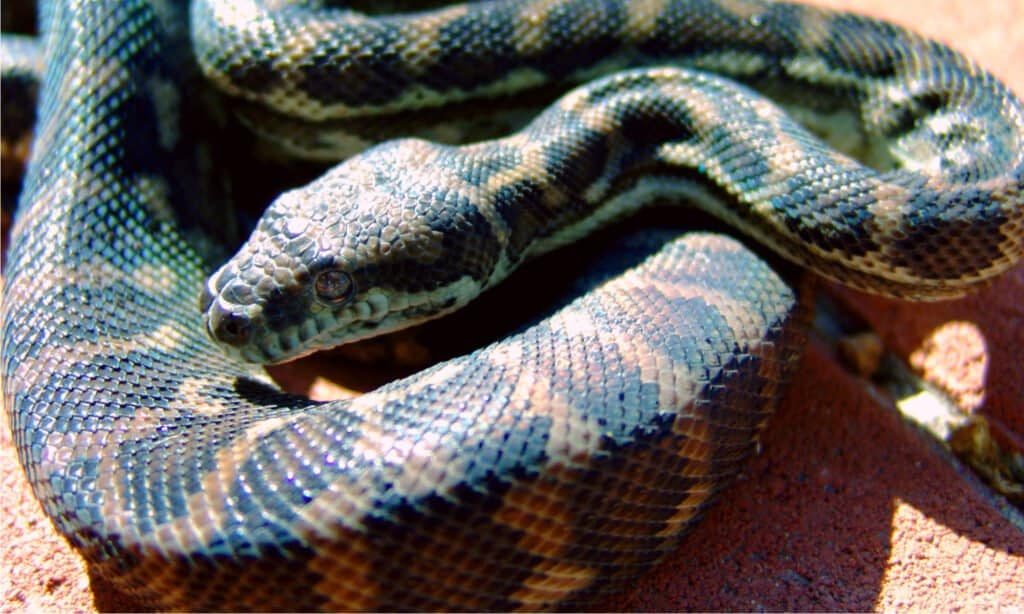A Brisbane family got a lot more than they bargained for when they went to get some ingredients from their kitchen pantry. In amongst the table salt and the pasta, there was a huge python. The news was shared on the social media accounts of the Brisbane North Snake Catchers and Services company which had attended the house a few days before. The posts include a picture of the snake draped across several shelves. Its body is supported by several packets of food and its head is resting cheekily on a lid. The post briefly explains that the snake is a coastal carpet python with the scientific name Morelia spilota mcdowelli. It also notes that the species is non-venomous and that it was found in a house in Joyner which is a suburb of the City of Moreton Bay near Brisbane.
Where Do Coastal Carpet Pythons Normally Live?
Coastal carpet pythons are a native species of Oceania and can be found from the northern part of Queensland to the northeast of New South Wales. They are comfortable in many habitats and can be spotted draped across tree limbs or in undergrowth as well as in more open ground. In gardens, they are typically found in piles of building materials and garden debris.
These snakes like to use above-ground habitats including exposed beams in verandas, sheds, and garages. More alarmingly, perhaps, they can also be found spending the winter in loft spaces and wall spaces of houses.
They have been recorded in all the suburbs in the Greater Brisbane region but seem to have a preference for leafy suburbs over inner city environments! The highest densities have been recorded in The Gap and Chapel Hill. Overall, they are the most commonly encountered snake in the region.

Coastal carpet pythons use above-ground habitats including exposed beams in sheds and garages.
©sharyn/Shutterstock.com
Are Carpet Pythons a Danger to Humans and Pets?
These are large snakes and it can be startling to come across them – especially in your pantry! At the same time, some people keep them as pets. They can grow up to 13 feet in length and have a muscular body. They do not have fangs and do not produce venom but can still bite using their 100 or so small sharp teeth which can cause nasty lacerations.
This species is carnivorous and kills its prey by constriction. Attacks on humans are rare but there have been reports of them biting and wrapping themselves around children. This only happens when they feel threatened.
Their usual diet is made up of small rodents and some reptiles and birds. They are opportunists and will view your household animals as legitimate prey. Sadly, they have been known to help themselves to the family pets – including cats and small dogs.
The photo featured at the top of this post is © Michelle Marks/Shutterstock.com
Discover the "Monster" Snake 5X Bigger than an Anaconda
Every day A-Z Animals sends out some of the most incredible facts in the world from our free newsletter. Want to discover the 10 most beautiful snakes in the world, a "snake island" where you're never more than 3 feet from danger, or a "monster" snake 5X larger than an anaconda? Then sign up right now and you'll start receiving our daily newsletter absolutely free.
Thank you for reading! Have some feedback for us? Contact the AZ Animals editorial team.







